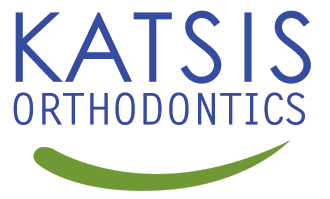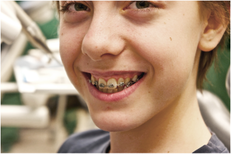Severe Dental Crowding
If a child has severe dental crowding a first phase of orthodontic treatment is indicated to help alleviate the crowding and help the adult teeth come into the arches in a healthier position. Expanders and braces are commonly used to help alleviate severe crowding in a young child. Improving the space available for erupting adult teeth helps reduce the likelihood of impacted teeth (teeth that are stuck in the gums). A complimentary examination is critical to diagnosing and treating crowding in a growing child.
If a child has severe dental crowding a first phase of orthodontic treatment is indicated to help alleviate the crowding and help the adult teeth come into the arches in a healthier position. Expanders and braces are commonly used to help alleviate severe crowding in a young child. Improving the space available for erupting adult teeth helps reduce the likelihood of impacted teeth (teeth that are stuck in the gums). A complimentary examination is critical to diagnosing and treating crowding in a growing child.
Dental Protrusion
When the upper front teeth are protruded (sticking out) they are far more likely to become damaged or lost due to trauma or accidents. It is no secret that kids occasionally get bumped or fall down. Minimizing the damage to permanent teeth is critical to insuring a lifetime of dental health.
When the upper front teeth are protruded (sticking out) they are far more likely to become damaged or lost due to trauma or accidents. It is no secret that kids occasionally get bumped or fall down. Minimizing the damage to permanent teeth is critical to insuring a lifetime of dental health.
Psychosocial Concerns
Although rare, sometimes children are very self-conscious of their teeth and smile at a young age. Early orthodontic treatment can help to dramatically improve the self-esteem of a young child especially if he or she reports teasing by peers or classmates.
Although rare, sometimes children are very self-conscious of their teeth and smile at a young age. Early orthodontic treatment can help to dramatically improve the self-esteem of a young child especially if he or she reports teasing by peers or classmates.

Orthodontics for Pre-Teens and Teenagers
The most common age for comprehensive orthodontics is around 12 years old. There are several advantages to beginning orthodontic treatment at this age. Children are beginning the puberty related growth spurt around this age which helps teeth move faster. Normal growth of the jaw at this time also helps correct overbites, which is the most common orthodontic problem.
Additionally many children have braces and orthodontic treatment at this age which helps reduce any treatment associated social anxiety. Even if your son or daughter still has a few baby teeth remaining at this age we recommend a complimentary orthodontic evaluation to assess their orthodontic needs. No referral is necessary for an evaluation, just contact us to schedule your initial examination!
The most common age for comprehensive orthodontics is around 12 years old. There are several advantages to beginning orthodontic treatment at this age. Children are beginning the puberty related growth spurt around this age which helps teeth move faster. Normal growth of the jaw at this time also helps correct overbites, which is the most common orthodontic problem.
Additionally many children have braces and orthodontic treatment at this age which helps reduce any treatment associated social anxiety. Even if your son or daughter still has a few baby teeth remaining at this age we recommend a complimentary orthodontic evaluation to assess their orthodontic needs. No referral is necessary for an evaluation, just contact us to schedule your initial examination!
|
Hours:
M -Th: 8:00 - 5:00 Sat: 8:00 - 1:00 Hours may vary by location |






